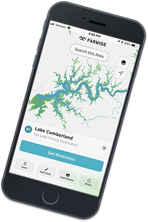The United States Fish and Wildlife Service (USFWS) recently issued a bit of good news for those interested in waterfowl hunting. In its annual estimate of breeding populations, USFWS found that while overall numbers are down from 2017 because of drier-than-normal conditions in breeding zones, the populations remain healthy, meaning hunters should expect to see good numbers of birds in upcoming or just-started waterfowl seasons.
Specifically, the study found that total duck population in the survey area was about 41.2 million, which was lower than 2017, but the goose and swan population has increased. What does all this mean for hunters? Pretty much steady as she goes. And while the USFWS report doesn’t make for edge-of-your-seat reading (it’s a government document, after all), there is an important takeaway: Habitat protection is the key to the long-term future of hunting and fishing.
Here are a few places in the Midwest you can go waterfowl hunting now and in the upcoming seasons. Good hunting!
Early season Canada goose hunting opened in mid-August in North Dakota’s Zone 1, the Missouri River Zone. As the name suggests, the zone is composed largely of boundary area along the banks of the Missouri River, mainly in the central part of the state. The daily limit in this zone during this early season is five Canada geese per hunter. Be sure to use non-toxic shot when waterfowl hunting, whatever state you’re hunting in.
Canada goose season opens in South Dakota’s Canada Goose Unit 1 on September 2 and runs into December. The zone comprises much of the state but does not include the southwest corner or much of the area of the state around Pierre and south to the Nebraska border. Hunters can take 15 geese daily in September but only 8 for the remainder of the season.
Waterfowl hunting is great in Nebraska. Hunters can pursue five types of waterfowl: teal, duck, coot, merganser and geese. You can get after teal starting September 1 in both the High Plains Unit and the Low Plains Unit. Duck, merganser goose and coot seasons start in October, but a two-day youth hunt is scheduled to take place starting September 29 in Waterfowl Zone 2. Hunters 11 and older need to be accompanied by a licensed hunter 19 or older, while those aged 12-15 must be with an adult (non-hunters are okay) 18 or older, and must carry a Hunter Education certification card or Apprentice Hunter Education Exemption Certificate.














10061 Comments
Leave Comment
Cancel Reply